UK PMI surveys delivered a more constructive signal in December, pointing to firmer momentum at year-end. PMI Manufacturing jumped from 50.2 to 51.2, a 15-month high, while PMI Services rose from 51.3 to 52.1. PMI Composite also climbed to 52.1 from 51.2.
S&P Global noted that businesses were buoyed by the “post-Budget lifting of uncertainty”. The survey is consistent with GDP growth accelerating to around 0.2% in December, though momentum for the fourth quarter as a whole remains more modest at roughly 0.1%.
Despite the improvement, growth remains uneven. Output and demand are still described as “lackluster overall”, with expansion heavily reliant on technology and financial services. Many other sectors continue to struggle or remain in outright contraction. Job losses were reported as worryingly widespread, raising doubts over whether stronger orders will translate into renewed hiring, particularly with staff costs still cited as a major pressure.
Taken together, the PMI data supports expectations for a further rate cut at the December MPC meeting, while reinforcing that the path for additional easing in 2026 will remain highly data dependent.




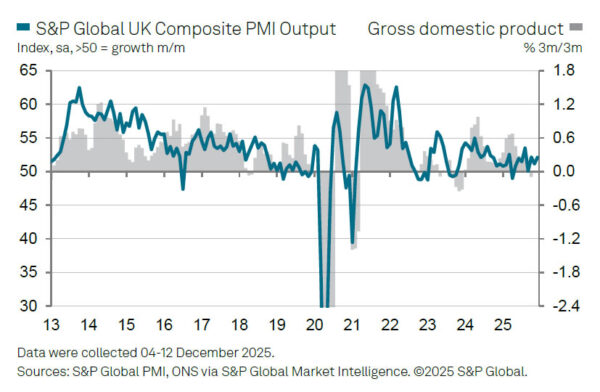
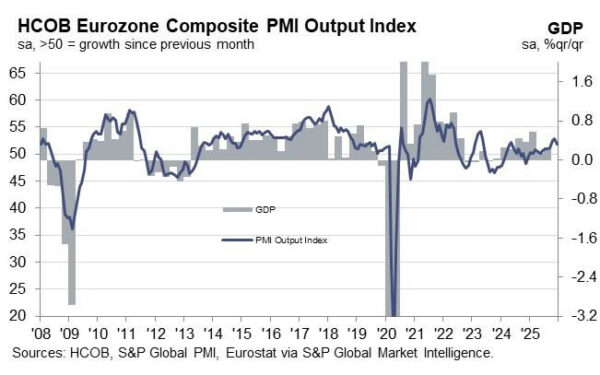
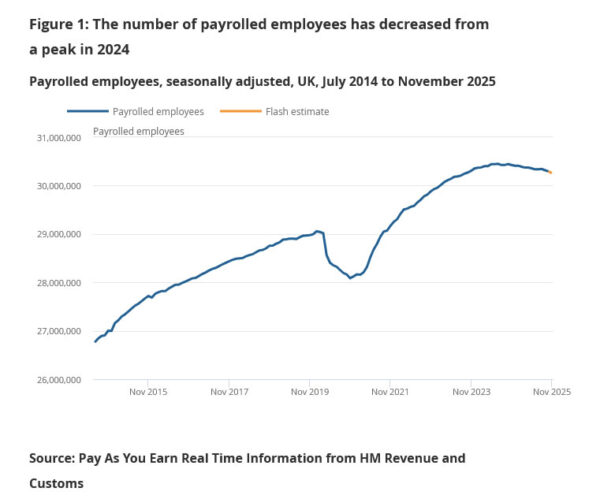
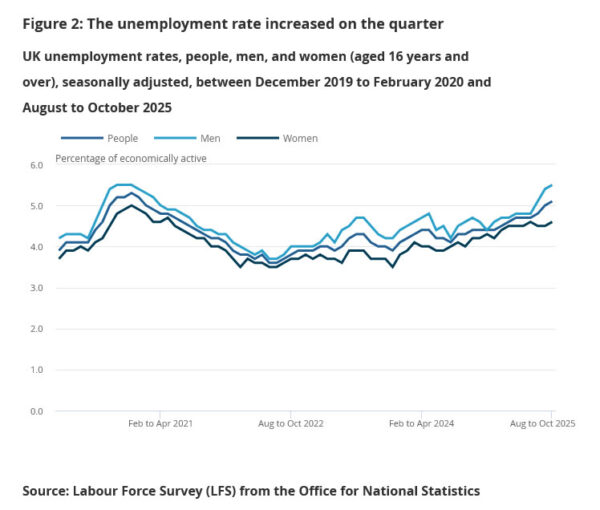
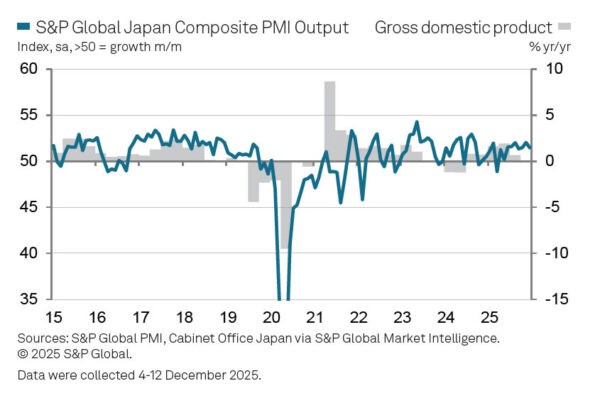
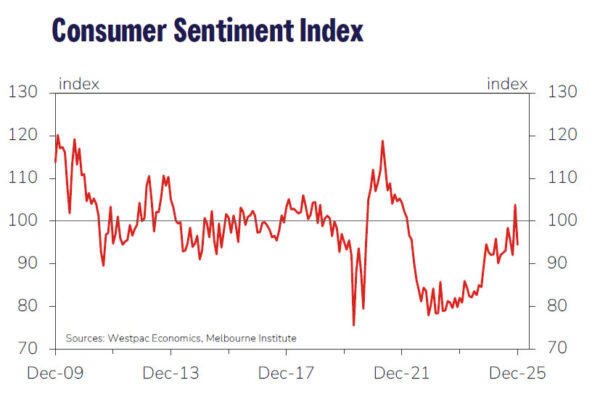
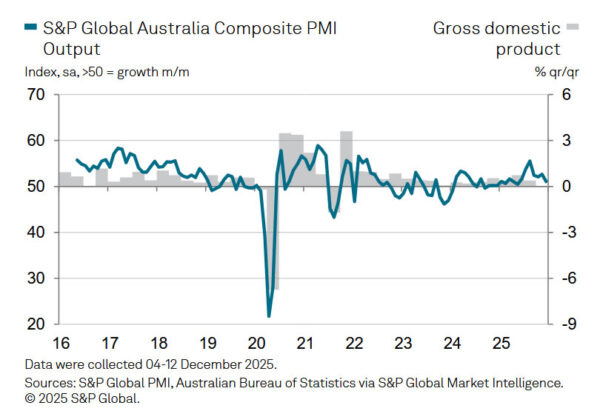
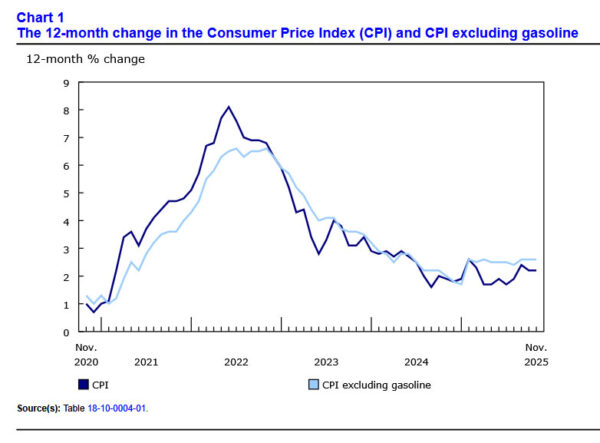
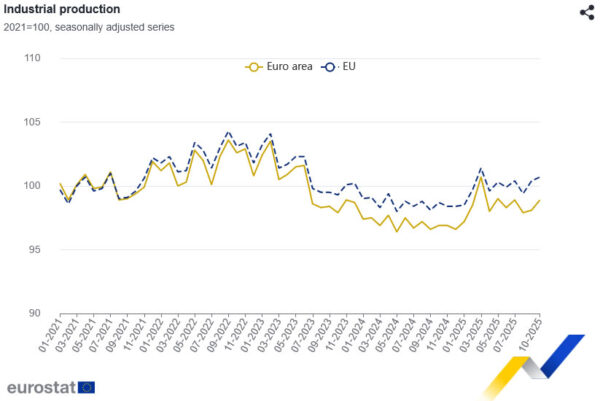
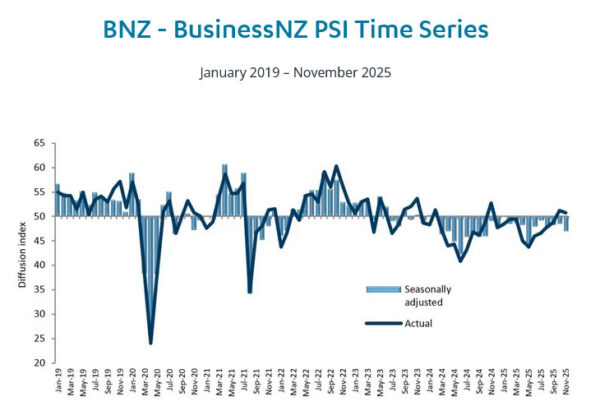
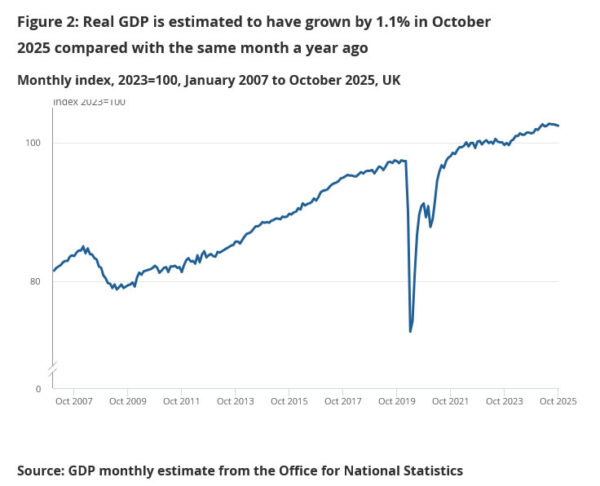

German ZEW sentiment rises to 45.8, but conditions still weak
German investor sentiment improved notably in December, with ZEW Economic Sentiment index rising from 38.5 to 45.8, well above expectations of 40.0. The gain signals growing optimism about the medium-term outlook, even as Current Situation Index fell from -78.7 to -81.0, undershooting forecasts of -76.2.
Across the Eurozone, sentiment strengthened even more decisively. ZEW Economic Sentiment index jumped from 25.0 to 33.7, comfortably beating expectations of 26.3, suggesting confidence is building that the region may be nearing a turning point after a prolonged period of stagnation. However, Current Situation Index edged lower by -1.2 pts to 28.5.
ZEW President Achim Wambach said expectations have become more positive after three years of economic stagnation, with expansive fiscal policy expected to inject fresh momentum into the German economy. Still, he cautioned that the “recovery remains fragile”, with persistent trade conflicts, geopolitical tensions, and weak investment likely to feature prominently on the reform agenda heading into 2026.
Full German ZEW release here.